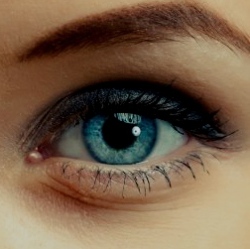
A new non-invasive approach for permanently correcting myopia (nearsightedness), replacing glasses and invasive corneal refractive surgery.* The non-surgical method uses a “femtosecond oscillator”, an ultrafast laser that delivers pulses of very low energy at high repetition rate to modify the tissue’s shape.
The method has fewer side effects and limitations than those seen in refractive surgeries, according to Vukelic. For instance, patients with thin corneas, dry eyes, and other abnormalities cannot undergo refractive surgery.** The study could lead to treatment for myopia, hyperopia, astigmatism, and irregular astigmatism. So far, it’s shown promise in preclinical models.
“If we carefully tailor these changes, we can adjust the corneal curvature and thus change the refractive power of the eye,” says Vukelic. “This is a fundamental departure from the mainstream ultrafast laser treatment [such as LASIK] … and relies on the optical breakdown of the target materials and subsequent cavitation bubble formation.”
Vukelic’s group plans to start clinical trials by the end of the year. They hope to predict corneal effects, how the cornea might deform if a small circle or an ellipse, for example. That would make it possible to personalize the treatment.
“What’s especially exciting is that our technique is not limited to ocular media — it can be used on other collagen-rich tissues,” Vukelic adds. “We’ve also been working with Professor Gerard Ateshian’s lab to treat early osteoarthritis, and the preliminary results are very, very encouraging. We think our non-invasive approach has the potential to open avenues to treat or repair collagenous tissue without causing tissue damage.”
